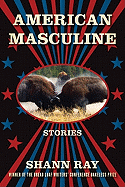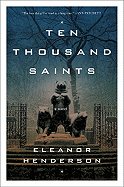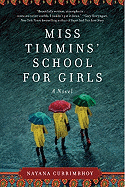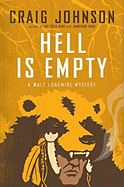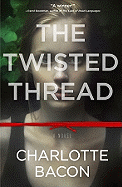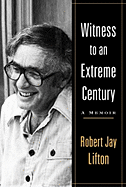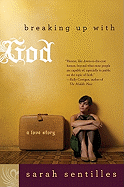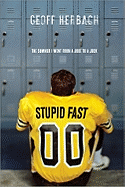Week of Tuesday, June 21, 2011
Today it's officially summertime, and even if your living isn't easy yet, as a reader you're probably at least thinking about the big, juicy books you want to take to the beach, on vacation or even just into your backyard.
 One of the things you'll find in this issue is a roundup of summer-reading lists from various print and online sources, which we hope will make your summer book shopping, borrowing and reading simpler. There are some wonderful titles on offer.
One of the things you'll find in this issue is a roundup of summer-reading lists from various print and online sources, which we hope will make your summer book shopping, borrowing and reading simpler. There are some wonderful titles on offer.
However, inveterate reader that I am, I'll confess to being disappointed this year. Usually I have around 40 books I eagerly await from June through August, and while I can't read them all, I do try (I load up the largest size boat-and-tote bag they make with galleys and ARCs and finished books for each summer's trek to the beach).
This year my "must read" list is way down, and I blame Shelf Awareness.
Yes, you heard me. I blame the very publication you're reading right now--because now that I'm its editor, I have to read way ahead. I've already finished most of the books of summer 2011 and started in on the fall lists.
Naturally, this is all in service of you, dear reader. That's why Marilyn Dahl, our reviews editor, receives galleys of almost every great read out in our Seattle office--so this new, review-packed version of Shelf Awareness can tell you all about each week's very best new books.
If that means I have less to look forward to in summer titles, well, just think--Marilyn and I (as well as Jennifer M. Brown, our children's editor) are already immersed in some great reads to share with you after Labor Day. You can e-mail either one of us if, after reading this issue, you think we've neglected one of this week's best books--or if you have one we should look out for next week, too.
By the way, if you'd like to share Shelf Awareness with your bookish friends, here's our new subscription widget to make things summertime easy.
American Masculine: Stories
by Shann Ray
The stories in Shann Ray's debut collection (winner of the Bread Loaf Writers' Conference Bakeless Prize) examine the blurred boundaries of the American West, between white and Indian, love and violence, past and present. The region's bold landscape--mountains, steppes, rivers, sky--becomes inseparable from Ray's characters, whose hearts and bodies are wildernesses in and of themselves.
With economy and grace, Ray conjures memories, images and relationships: a rodeo 20 years gone, the flight of golden eagles in Montana, the distance between father and daughter. He is a skilled manipulator of time and point of view, and a patient builder of suspense, every word deliberate in the creation of mystery. But what is most impressive about this book is the cadenced language, like that in song or prayer--ancient and somber, eternal and collective.
This book can be difficult to read, and not for any shortage of technical prowess. These pages are laden with sorrow: the revulsion a wife feels toward her husband, the regret of an abusive father, the suffering of a mother who has survived her children, the allure of alcohol and violence both on and off reservations. By facing the grief and brutality of his characters' lives head-on, Ray challenges us to reckon with such forces within ourselves. The emotional difficulty of these stories is not reason to avoid them but rather evidence of their necessity. With unwavering precision, Ray also shows us wonder--at a newborn's face, the scale of land and sky, the astonishing power of new love, the way snow falls from a basketball net. American Masculine does what the best fiction should: it breaks open the human heart with honesty and clarity, showing us the bad that exists alongside, and is often indistinguishable from, the good. --Claire Fuqua Anderson, fiction writer
Discover: Shann Ray, a striking new voice in short fiction, tackles brutality and the American West in this award-winning debut.
Ten Thousand Saints
by Eleanor Henderson
The main setting of this debut novel is Manhattan's Lower East Side in the late '80s--that pivotal time just before gentrification, when derelict buildings were occupied by drug dealers, immigrants and runaways. Every character in this tale is somehow flawed, but we keep pulling for them, hoping that they will sort themselves out, instead of endlessly chasing whatever a drug or cult experience has promised.
Jude Keffy-Horn is the unlikely hero/protagonist who, despite a possible diagnosis of Fetal Alcohol Syndrome and indifferent parenting, might just emerge a whole person. Jude and his best friend, Teddy, are druggie adolescents in the rural metropolis of Lintonburg, Vt. The boys come by their taste for drugs honestly: Jude's father, Les, is a drug dealer in New York, and his mother makes her living as a glass blower--and most of her inventory consists of bongs. Teddy's splintered home (his mother, "Queen Bea," leaves as the novel begins) presages Bad Choices Ahead. Jude and Teddy smoke pot, huff and do whatever it takes to maintain a constant high. On Jude's 16th birthday, they hook up with visiting Eliza; before she boards the train back to New York a mere six hours later, Teddy is dead from a cocaine overdose and she is pregnant by him. Jude is sent to New York to live with his father.
Enter Johnny, Teddy's 18-year-old half-brother--he marries Eliza so that he can raise Teddy's child. One problem: Johnny is in the closet, except to his boyfriend, Rooster, but they, and very soon Jude and Eliza, become members of "straight-edge," a cult movement that eschews meat, sex and drugs--but not punk rock.
In Ten Thousand Saints, Henderson has captured the dynamic of a generation of kids trying to overcome the legacy of whacked-out parents, terminal permissiveness and no rudder. --Valerie Ryan, Cannon Beach Book Company, Ore.
Discover: A debut novel that captures coming-of-age experiences in the East Village scene of the 1980s.
Miss Timmins' School for Girls
by Nayana Currimbhoy
Two characters narrate the story. Charu, a naive young Indian teacher, shamed her whole life by a facial birthmark, experiences more of a coming-of-age than any of her students. Escaping the confines of her sheltered upbringing, she eschews the company of other prim teachers, aligning herself with controversial rebel teacher Moira Prince. Entering into a nighttime world of sex and drugs, Charu awakens to enticing internal passions while trying to maintain her good-girl exterior by day.
When Moira is found dead, a myriad of unanswered questions surface along with buried scandals that the surrounding community would rather keep hidden. This is where the second narrator, the teenage Nandita, takes over. The endearing Nandita is clever and courageous; she and her small posse of student sleuths attempt to solve the mystery of Moira's death--with some heartbreaking results.
While the whodunit element is intriguing, it nearly takes a back seat to the rare glimpse Currimbhoy affords into the world of a boarding school that clings stubbornly to British mores in the midst of an irresistible tapestry of Indian culture. --Natalie Papailiou, blogger at MILF: Mother I'd Like to Friend
Discover: A twisted mystery of passion and murder set at a boarding school in 1974 India.
Mystery & Thriller
Hell Is Empty
by Craig Johnson
Hell is empty, its denizens poured out to populate the pages of the seventh installment of Craig Johnson's popular Walt Longmire mystery series (The Cold Dish), where a prisoner transfer goes very wrong when a hardened killer escapes with other prisoners and hostages while he is leading lawmen to the remains of a young Indian boy. For those not familiar with the series, it blends crime fighting with American Indian spiritualism, similar to Tony Hillerman's acclaimed mysteries. But Johnson's world is bleaker, his characters darker, and the frigid high plains winds erase any memory of Hillerman's sun-drenched desert settings.
Hell Is Empty is more mad dash than mystery, a muscular story of guns and grit, man against man and man against nature. The plot requires a certain suspension of disbelief as the hero, aging ex-Marine Sheriff Longmire, single-handedly dispatches a cadre of cold-blooded thugs while climbing the snow-encrusted peaks of northwest Wyoming. Longmire is a tad bland, a white man in Indian territory whose personality pales in comparison to his native-American cohorts. Luckily, in this novel he is joined by his longtime friend, Virgil White Buffalo, a 400-pound Crow recluse cast in the unlikely role of guardian angel. Buffalo's character adds color and much needed humor to the tale, as together they track the killer up the Bighorn range.
While Johnson's use of Dante's Inferno as a literary prop stretches the reader's tolerance at times, the characters' ascent is indeed hellish, pulling them deeper into a hypothermic fever dream where the line between the living and the dead blurs. --Tom Lavoie
Discover: A gripping thriller where hell holds both fire and ice in the western high plains.
The Twisted Thread
by Charlotte Bacon
Nothing bad happens at Armitage Academy. It's too elite, too private and too secluded in rural Massachusetts. Its students are wealthy and accomplished, its faculty and staff beyond reproach.
So when beautiful queen bee Claire Harkness is found dead in her dorm room, the Armitage Academy community is stunned and confused. When it's discovered that Claire recently gave birth, and the baby--or the baby's body--is missing, those feelings change to fear, and the tragedy and mystery threaten to collapse the very foundations of affluence and class that the school was built upon.
When Armitage alumnus Detective Matt Corelli and his partner, ornery vegan Vernon Cates, arrive to begin the investigation, they can't quite penetrate the networks of secrecy that blanket the school like ivy. They turn to first-year English department intern Madeline Christopher, whose youth and outsider status make her an ally and a target for both the student body and faculty. The twisted path they all must take into the closed world of Armitage reveals not only what happened to Claire Harkness, but also the dark tunnels that can run beneath privilege.
Recommended for fans of Donna Tartt's The Secret History and Marisha Pessl's Special Topics in Calamity Physics, Bacon's (Split Estate) well-written, fast-paced novel is the perfect beginning to any literary mystery lover's summer reading list. --Sarah P. Miller, blogger at Blue Truck Book Reviews
Discover: An elite boarding school is rocked by the murder of one of its students.
Romance
The Naked King
by Sally MacKenzie
Sally MacKenzie returns to Regency England with the seventh installment in her Naked Nobility series. This time the "royal" hero is Stephen Parker-Roth, the notorious and sexy "King of Hearts." Stumbling home one morning after a night out, Stephen literally runs into Lady Anne Marston. Soon they are entangled in an accidental embrace, which becomes an accidental engagement when London's biggest gossip sees their mishap.
Anne is a 27-year-old spinster, her dreams of a home and family shattered by an ill-fated romantic encounter 10 years ago. The King of Hearts quickly captivates her with his seductive kisses and smoldering touch, but Anne cannot believe that he will return her love when he learns the true reason for her seclusion from society.
What Anne doesn't know is that Stephen intends to go through with their sham engagement, thinking that her good sense will provide him a capable helpmeet. However, he soon realizes his bride-to-be's combination of intelligence and vulnerability are going straight to his heart, and the lust she kindles in his body is a delightful bonus. Settling down suddenly seems attractive, but first he must convince Anne to confess the secret that stands in the way of their love.
Fans will delight in this return to MacKenzie's series, where deep passion and realistic relationship obstacles are frosted with light-hearted banter and intricate period details. One word of caution: the many cameos of former heroes and heroines of the series may leave MacKenzie's new readers scrambling to keep up with the cast. The remedy, of course, is to read the earlier installments, an enjoyable prescription indeed. --Jaclyn Fulwood, graduate assistant, University of Oklahoma Libraries
Discover: A sexy Regency romance full of flair and heart.
Nonfiction
My Year with Eleanor
by Noelle Hancock
While on a much-needed vacation, transplanted Texan Noelle Hancock learned she had lost her high-profile, well-paying job as a blogger in New York City. Exhausted by a career largely based on keeping up with breaking celebrity gossip, Hancock sat down to create a new plan for her life and froze--she had developed anxiety and avoidance issues that left her paralyzed. Then Hancock happened upon a quote by Eleanor Roosevelt: "Do one thing every day that scares you." The famous First Lady's command inspired a plan both simple and ambitious. Hancock put off job-hunting in favor of spending 365 consecutive days facing her fears, with the help of family, friends and the writings of Eleanor Roosevelt.
From singing karaoke to hiking Mount Kilimanjaro to volunteering in a cancer ward, Hancock takes readers on a hilarious and insightful journey. Her sense of humor shines in her laugh-out-loud one-liners as well as her choices, such as confronting her fear of heights via trapeze lessons. Hancock also faces down personal anxieties, such as leaving the house without makeup and battling a dependence on sleeping pills. She remains reflective on the nature of fear, how it protects and hinders us, and how her project helped her to feel more secure in herself and her relationships. While spending a year on personal growth may sound self-indulgent, Hancock finds that embracing life gives her the desire to help others.
Although similar in concept, this book is no mere Julie and Julia clone. Whether your biggest fear is death or public speaking, chances are you will laugh and relate to at least one of Hancock's adventures. --Jacki Fulwood, graduate assistant, University of Oklahoma Libraries
Discover: A hilarious memoir about facing fear and embracing life.
The Statues that Walked
by Carl Lipo and Terry L. Hunt
From the time the first Europeans arrived on Easter Island in the 18th century, Westerners have been fascinated by the island's monumental stone sculptures and baffled by how an impoverished prehistoric culture could have built them. The standard explanation was that the island had once been as fertile as other inhabited islands in the Pacific. Over time, its population committed ecological suicide, cutting down thousands of giant palm trees to support the statue cult.
When anthropologist Terry Hunt and archeologist Carl Lipo arrived on Easter Island in 2001, they expected simply to add a few details to the already well-developed account of its early history. In their fourth year of fieldwork, they found evidence of the giant palms that scholars believed covered the islands when Polynesian settlers first arrived. It was a major discovery. There was only one problem: the oldest layers were several hundred years later than the latest accepted date for colonization. If the island was deforested over decades instead of centuries, then everything archeologists thought they knew about the early culture of Easter Island was in question.
Hunt and Lipo reexamined, and rebuilt, archaeology's fundamental assumptions about Easter Island, using discoveries from other Pacific island cultures, local oral traditions, previously discounted field research, satellite images from Google Earth, studies by evolutionary biologists, accounts by early European observers, even game theory. They make a compelling case against the traditional version of Easter Island's prehistory. Instead of "ecocide," they describe a culture of careful environmental stewardship. And along the way, they prove how a small number of men can make a giant monolith "walk." --Pamela Toler, blogging at History in the Margins
Discover: A well-told account of how two scientists reexamined the archeological evidence on Easter Island and discovered that its "mysteries" aren't so mysterious after all.
Biography & Memoir
Witness to an Extreme Century
by Robert Jay Lifton
Renowned psychiatrist Robert Jay Lifton (Home from the War; The Nazi Doctors) has written a memoir that resists easy categorization. This is fitting, since Lifton's wariness of dogmatism has characterized his work in psychohistory for more than half a century. In the 1950s, Lifton was a young psychiatrist developing his own work method that couched lengthy interviews in a larger "mosaic" of historical and cultural context.
In detailed accounts of his major studies--on victims of systematic brainwashing in Communist China, survivors of the atomic bomb in Hiroshima, Vietnam veterans and Nazi doctors--Lifton not only chronicles his life's work but also delves into the most horrific events in recent history and the minds of people who both witnessed and created these "atrocity-producing situations." The trajectories of his personal, professional and intellectual life expand to encompass not a single life but an entire era. From his roles in antiwar protests and informal "rap groups" for "vets and shrinks" to his court testimonies in high-profile trials and 45 years of interdisciplinary exchange at the Wellfleet meetings he hosted with his wife, Lifton's activities form a nuanced narrative that is also an examination of war and peace, good and evil, and collective versus individual psychology.
Perhaps even more impressive than Lifton's many accomplishments is the eloquent, conversational style he employs in tackling often-heavy subject matter, as if he is now the interviewee, sitting across from his reader, injecting humor, anecdotes and even dreams into a remarkable life story. This isn't a typical memoir, but then, Robert Jay Lifton hasn't had a typical life. --Claire Fuqua Anderson, fiction writer
Discover: An eloquent life account of the groundbreaking psychiatrist/historian who studied Hiroshima bomb survivors and Nazi doctors.
Religion
Breaking Up with God: A Love Story
by Sarah Sentilles
Breaking up is hard to do, and harder still when your soon-to-be ex is the deity you've long worshipped--but that is what Sarah Sentilles does when her relationship with God changes. In her latest, Sentilles (A Church of Her Own; Taught by America), chronicles her courtship, relationship and subsequent rift.
Sentilles's quite serious "affair" with God began to unravel she was in the ordination process to become an Episcopal priest. Sentilles herself calls out the least-likable aspect of the book: God as "boyfriend." In the prologue, she confesses: "I'm not completely comfortable portraying it as a love affair gone wrong. Figuring it as a romance seems simultaneously so medieval-mystic, so patriarchal, so oedipal that is makes me cringe." Yet, that romance-gone-bad frame allows Sentilles to detail her decision to step away from the calling she had worked so long toward fulfilling.
The author's relationship with mortal men had a common theme, too: before entering seminary, she engaged with emotionally distant, unavailable and even abusive men whom she constantly had to impress in order to win and re-win their affections. In the aftermath of these relationships, her relationship with the church and with God fill a void. Like any new romance, there is a certain blindness to faults at the beginning. Once Sentilles began to question the noninclusiveness of the Bible, she was unable to reconcile her growing feminist ideals with the traditional male, omnipotent deity of her studies. So she dumped him. --Megan Tarbett, librarian, WV Library Commission
Discover: An aspiring Episcopal priest's chronicle of her relationship with God--from courtship to co-habitation and, finally, to the break-up.
Psychology & Self-Help
Crazy: Notes on and off the Couch
by Rob Dobrenski
Working from 15 years' experience, psychologist Rob Dobrenski (Shrink Talk) makes his literary debut with Crazy, a memoir intended to "debunk some myths and stigmas about mental health." Dobrenski contends that the greatest myth of all is that therapists are trouble free and clients filled with problems. He wants the public to know that "in reality, we're just like them: crazy."
Crazy is presented as a day-in-the-life, in which each hour features Dobrenski's treatment of a new client with a different issue. Among them are a blind man battling depression, a rape survivor dealing with post-traumatic stress disorder and a couple contemplating divorce. Chapter by chapter, Dobrenski describes his diagnosis and therapeutic approach in a casual, informative style that demystifies much of what happens when one lies down on the proverbial couch, and in a bold--if not entirely reassuring--move, he breaks from behind the screen to discuss his own experiences in therapy and the use of medication within the mental health community. Readers familiar with Henri Nouwen's groundbreaking The Wounded Healer will recognize Dobrenski's message: "Shrinks are people, too!"
If his extensive use of expletives is any indication, Dobrenski is determined to prove it. His dialogue and clinical definitions are sometimes clunky and didactic, but his goal of normalizing psychological problems and putting them on par with physical ailments that require medical intervention is a worthy one that makes the flaws forgivable. Crazy is a solid step in the right direction of reminding patients that treatment can be a two-way street. --Rebecca Joines Schinsky, blogger at The Book Lady's Blog
Discover: A refreshing memoir that reveals what your therapist is really thinking.
Children's & Young Adult
Stupid Fast
by Geoff Herbach
In his first book for young adults, Geoff Herbach (The Miracle Letters of T. Rimberg) explores with insight, humor and poignancy the transformation of Felton Reinstein during the summer in Bluffton, Wis., that he turns 16. His mother, Jerri, witnesses the pivotal spring gym class in which he sprints the entire 600-yard dash and outruns the best runners by 150 yards ("stupid fast"). At first, she encourages him. But as he shoots up to more than 6 feet and 168 pounds, and the coaches line up to talk to him, Jerri begins to withdraw.
Herbach perfectly captures the unexpected tradeoffs that come with gaining acceptance in one arena while losing the foothold in one's foundation. Felton is the one who found his father hanging in the garage when he was five ("This could be a dark tale!" he says. "It's not"). Jerri won't talk about it to Felton or his 13-year-old brother. She simply shuts down. And Felton's best friend is away for the summer. Luckily, Felton's paper route puts him in the path of Aleah Jennings, who's moved in for the summer, and a relationship develops between them.
Felton's questions about his mother's increasingly bizarre behavior feed a larger mystery at the center of the novel. If the narrative at times rambles, you will forgive Herbach because it's so true to Felton's stream-of-consciousness meanderings. The author grants access to a male teen's thoughts at his most vulnerable, as he builds tenuous friendships with his jock buddies, and takes Aleah's hand, "which made me totally dizzy and sort of sweaty." --Jennifer M. Brown, children's editor
Discover: A funny and poignant novel narrated by a teen whose physical changes earn him a place among the jocks who once ostracized him.
Bad Kitty Meets the Baby
by Nick Bruel
Nick Bruel reunites the full cast of Bad Kitty characters--plus one significant addition--in this newest chapter book installment of the laugh-out-loud series. When Kitty's owners go off to bring home "a very special surprise," Uncle Murray reprises his role as pet-sitter. Kitty, of course, must misbehave, leading to Uncle Murray's latest Fun Facts: "Why Do Cats Climb Trees?"; "Why Do Cats Get Stuck in Trees?"; and the all-important "How Do You Get a Cat Back Down from a Tree?"
When the surprise finally arrives, Kitty can't figure out what it is. This sets up one of the funniest bits in the book, the "What the Heck Is that Thing?" game show with contestants who must guess its identity. We know, of course, that it's a baby. But readers will be amused to find that, while Kitty decides it's a dog, the neighborhood cats think it's a fellow feline and invite the baby to compete in the Pussycat Olympics. This leads to a temper tantrum of epic proportions.
As the dust settles, Kitty discovers that she and Baby have a lot in common. The ending is a soft-tackle of both adoption and sibling relationships, and the take-home lesson is that, while change can be scary, new friends are worth it. Bruel covers all the bases with a heart-warming, chuckle-inducing and slyly educational read. --Jenn Northington, event manager at WORD, Brooklyn, N.Y.
Discover: A new comical Bad Kitty adventure in which she must learn to live with (and love) the newest "stray."


